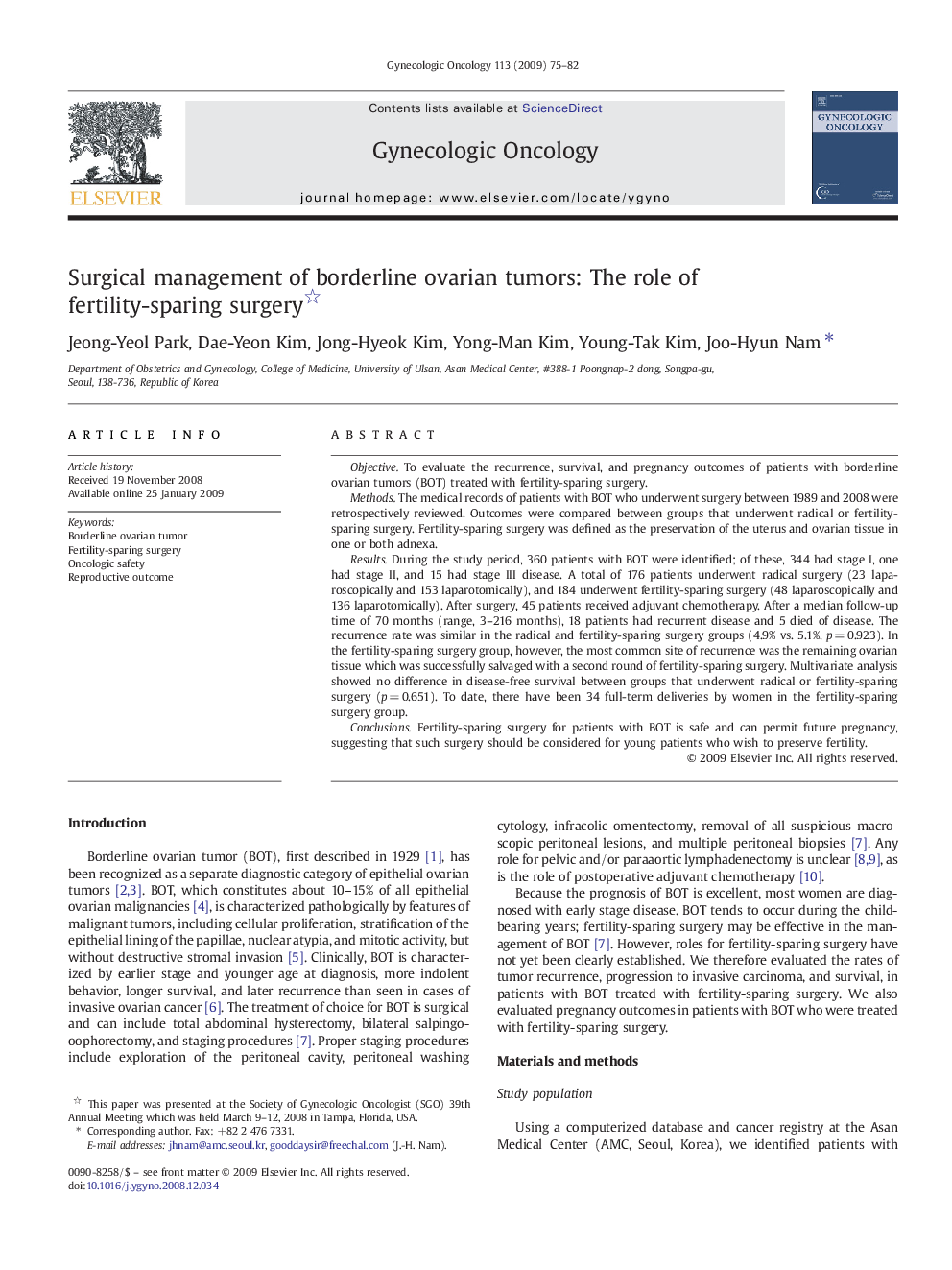| کد مقاله | کد نشریه | سال انتشار | مقاله انگلیسی | نسخه تمام متن |
|---|---|---|---|---|
| 3944305 | 1254188 | 2009 | 8 صفحه PDF | دانلود رایگان |

ObjectiveTo evaluate the recurrence, survival, and pregnancy outcomes of patients with borderline ovarian tumors (BOT) treated with fertility-sparing surgery.MethodsThe medical records of patients with BOT who underwent surgery between 1989 and 2008 were retrospectively reviewed. Outcomes were compared between groups that underwent radical or fertility-sparing surgery. Fertility-sparing surgery was defined as the preservation of the uterus and ovarian tissue in one or both adnexa.ResultsDuring the study period, 360 patients with BOT were identified; of these, 344 had stage I, one had stage II, and 15 had stage III disease. A total of 176 patients underwent radical surgery (23 laparoscopically and 153 laparotomically), and 184 underwent fertility-sparing surgery (48 laparoscopically and 136 laparotomically). After surgery, 45 patients received adjuvant chemotherapy. After a median follow-up time of 70 months (range, 3–216 months), 18 patients had recurrent disease and 5 died of disease. The recurrence rate was similar in the radical and fertility-sparing surgery groups (4.9% vs. 5.1%, p = 0.923). In the fertility-sparing surgery group, however, the most common site of recurrence was the remaining ovarian tissue which was successfully salvaged with a second round of fertility-sparing surgery. Multivariate analysis showed no difference in disease-free survival between groups that underwent radical or fertility-sparing surgery (p = 0.651). To date, there have been 34 full-term deliveries by women in the fertility-sparing surgery group.ConclusionsFertility-sparing surgery for patients with BOT is safe and can permit future pregnancy, suggesting that such surgery should be considered for young patients who wish to preserve fertility.
Journal: Gynecologic Oncology - Volume 113, Issue 1, April 2009, Pages 75–82